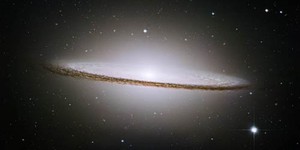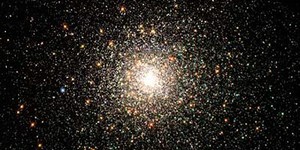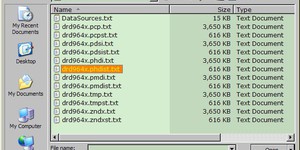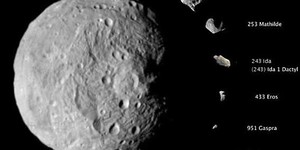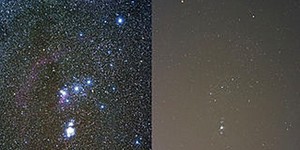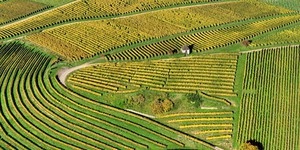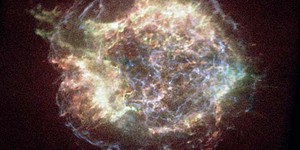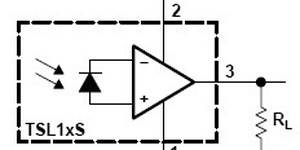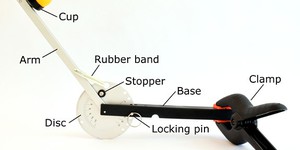Others Like “The Milky Way and Beyond: Globular Clusters” (top 20 results)
|
The Milky Way is the edgewise view of our home galaxy, a disk made up of billions of stars. The Sun resides on one of the spiral arms of the disk, 30,000 light-years from the thick hub of the galaxy. The actual center, with a black hole 3-4 million times the Sun's mass, is hidden by dust clouds in space. In this astronomy science fair project, you will use astronomical data to locate the center of this galaxy.
Read more
Would it surprise you to learn that no one knows the exact age of the universe? Astronomers have estimates, and as they gather increasingly precise data and measurements, they continue to refine those estimates to come up with more accurate estimates. In this project, you can look at data about stars in dense groups called globular clusters and come up with your own estimate for the minimum age of the universe. How closely will your estimate match those of other astronomers?
Read more
Can you remember what the weather was like last week? Last year? Here's a project that looks at what the weather was like for over a hundred years. You'll use historical climate data to look at moisture conditions in regions across the continental U.S. You'll use a spreadsheet program to calculate the frequency of different moisture conditions for each region and make graphs for comparison. Which part of the country has the most frequent droughts? The most frequent periods of prolonged…
Read more
Did you know that in addition to the Sun and planets, our solar system is filled with millions of asteroids, which are chunks of rock left over from the early days of its formation, or from collisions between larger objects like planets? Agencies like NASA track asteroids, not only because they might pose a threat to humanity by colliding with Earth, but because they can provide us with information about the history of our solar system, and even be useful for mining raw materials in space! In…
Read more
This is a great project for someone interested in both stargazing and photography. Bright city lights and even the light of the full Moon obscure the dimmest stars, which can make identifying constellations more difficult. In this astronomy science project, you will calibrate a digital camera to measure the skyglow in different locations. This can be a great tool to comparing the quality of different star viewing locations.
Read more
Wondering what sustainable, high-producing agriculture might look like? This science project explores how analyzing bird's-eye-view pictures of a field can make farmers aware of variations in their fields. Farmers can use this information to optimize their farming practices, or even feed this information to high-tech agricultural equipment so the machines can automatically adjust their actions (like fertilizing or watering) to the needs of a piece of land.
Read more
Have you ever seen amazing, colored images of objects in space, like stars or even entire galaxies? Some of these images were originally taken with forms of radiation that the human eye cannot actually see, like x-rays. In order to create the beautiful pictures you see in the news or online, scientists have to use an image-editing program to add color to them. In this astronomy science project, you will use raw x-ray data from NASA's Chandra X-ray Observatory telescope to create amazing…
Read more
LEDs (light-emitting diodes) are electronic components that convert a portion of the electrical energy flowing through them into light. How does the intensity of the light produced vary with the current flowing through the LED? To find out, you'll build some simple circuits to vary the current flowing an LED. You'll also build a simple light-to-voltage converter circuit to measure LED output.
Read more
If you have ever tried to hit a target (such as a trash can) with a wad of paper, you know that aim is everything. But it is not always easy to get it right every time! Missing is not that big a deal with a wad of paper, but what if you were in an invading army in the Middle Ages, using a catapult to hurl huge stones and knock down castle walls? For a successful invasion, it would be important to know exactly how far, and how reliably, a catapult could launch a projectile. In this project you…
Read more
Do you read the list of ingredients in foods and drinks before you buy them at the grocery store? If you do, you may have noticed that many of the items, especially colored drinks, contain dyes with names such as FD&C Blue 1, Red 40, or Yellow 5. But how much dye is needed to create all these colors? In this chemistry science project, you will build a simple spectrophotometer that is able to measure the concentration of colored chemicals in solutions. You will test your device by measuring…
Read more
|
Explore Our Science Videos
DIY Mini Drone Part 4: Program Drone Steering with Arduino
Robotics Engineering Project: Use the Force! Push and Pull LEGO® Mindstorms® Robots
Make a Homemade Fly Trap


